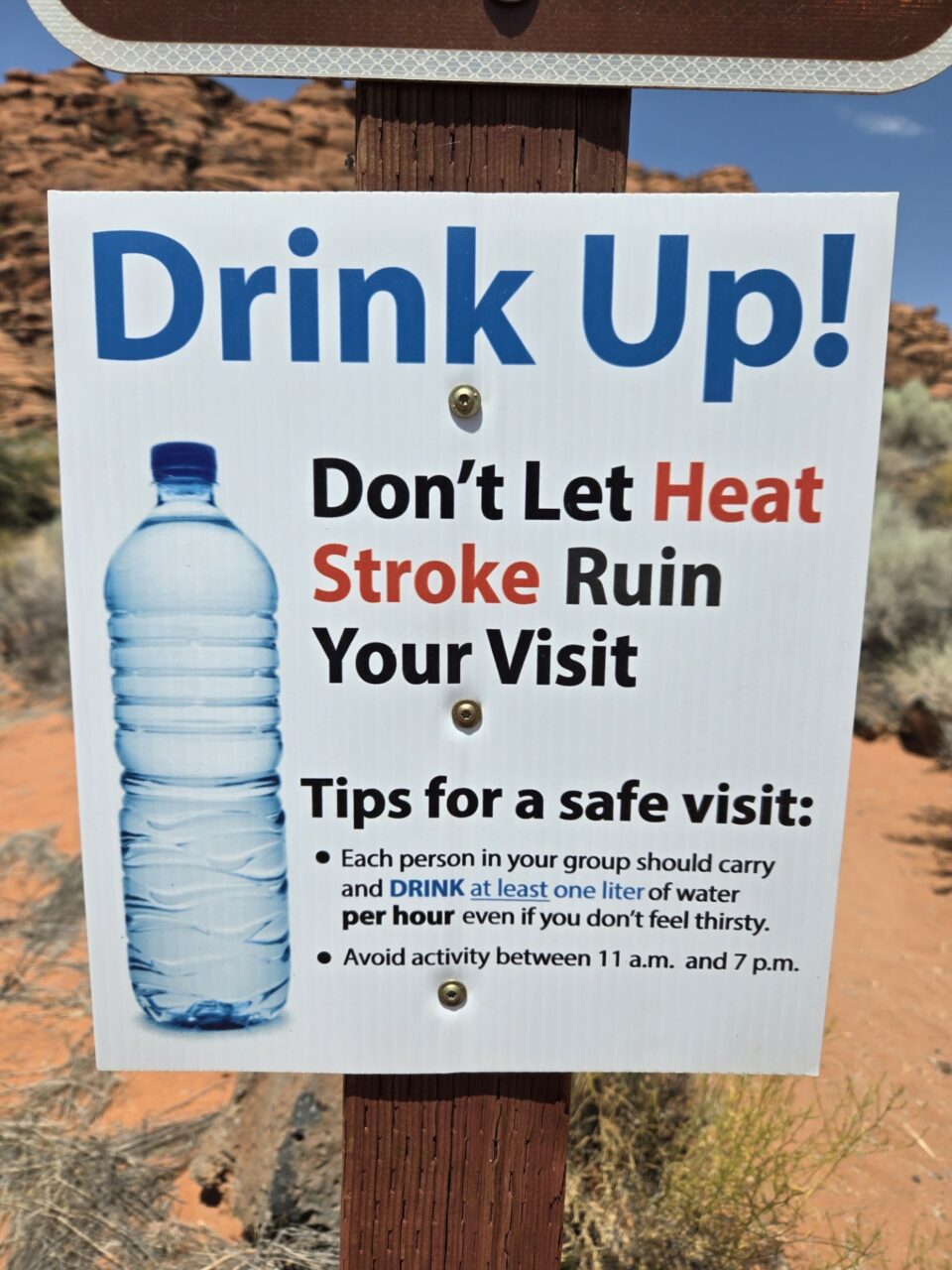After Southern Utah heat-related deaths, professionals advise Utahns to stay safe

After a woman passed away in Snow Canyon State Park as well as a father and daughter in Canyonlands National Park, with heat exhaustion being factors in both instances, professionals advise Utahns to stay hydrated and safe during the hottest months of the year.
A 30-year-old female was found during a search for two individuals, identified as the woman’s parents, in Snow Canyon State Park but was deceased by the time first responders arrived. The two individuals were found in critical condition and were transported to the hospital, according to the Santa Clara-Ivins Public Safety press release.
In Canyonlands National Park, a man and his daughter were found deceased on the Syncline Loop Trail after having gotten lost and running out of water, according to the National Park Service’s press release. Air temperature at the time was over 100 degrees Fahrenheit.
Syncline Loop is a particularly intense trail, according to Canyonlands’ public affairs specialist Karen Garthwait, and features year-round safety signage. “We need to make sure people are aware (that) what they’re undertaking is (a) 1500 foot descent, 8.1 mile trail,” she said.
As temperatures remain high in Utah, and especially Southern Utah, staying hydrated and understanding your limitations is essential when hiking, Darrell Cashin, a sergeant with the Washington County Sheriff’s Office assigned as the search and rescue liaison.
“If you know you’re going to go hiking, try and pre-hydrate your body. Drink plenty of fluids and get it prepared for what you’re going to put it under in this heat,” he said. “It is extremely dry and extremely hot and it will tax your body.”
Most of the people Washington County Search and Rescue has rescued from heat-related injuries on trails lack enough water for the activity and only carry a water bottle or two Cashin said. He added that people exercising in the heat should be drinking a gallon of water an hour, and should carry extra just in case.
Hikers who begin to feel dehydrated or lose the trail should find shade and sip on water almost continuously. Cashin’s team has rescued people who were suffering from dehydration but had bottles of water they were saving, he said.
“I know some people believe that like saving some for later is better but really it’s not. In situations like that, you want to continue to just drink (water) until it’s gone because it takes a little time for that to get into your body and help you,” he said. “There have been some people that have had serious dehydration because they were trying to save their fluids.”
In addition to plenty of water, hikers should be aware of conditions they will be hiking in. If at all possible, hikers should avoid exerting themselves in the middle of the day when it’s hottest. Cashin said hiking in the early morning hours or after the sun has gone down is safer than hiking in the heat. Hikers should also have a means of calling for help if the need arises.
State parks provide other activities that can be done in the hottest part of the day that don’t involve hiking, Devan Chavez, associate director of Utah State Parks said. In Southern Utah, water activities like fishing or boating provide a good alternative, and parks like Snow Canyon feature scenic drives with spots to pull over and picnic, Chavez said.
“Checking for park conditions before getting on the road is paramount. Yes, it’s important to check a week out when you’re making your plans … but before you get on the road, checking park conditions is vital.”
Safety information is available via signs, brochures and park websites, according to spokespeople from both the Utah State Parks department and Canyonlands National Park. Safety tips shared by the State Parks department emphasize keeping hydrated and covering up bare skin with breathable shirts and wide-brim hats.
If a hiker finds themselves lost on a trail in a national park, it’s best to call 911 from a safe spot and then stay still to give rescuers the best chance to find you, Garthwait said. The parks have infrastructure that allows rescue calls to be rerouted to where it would be most appropriate.
”Let us use our energy (to come) find you,” she said.

